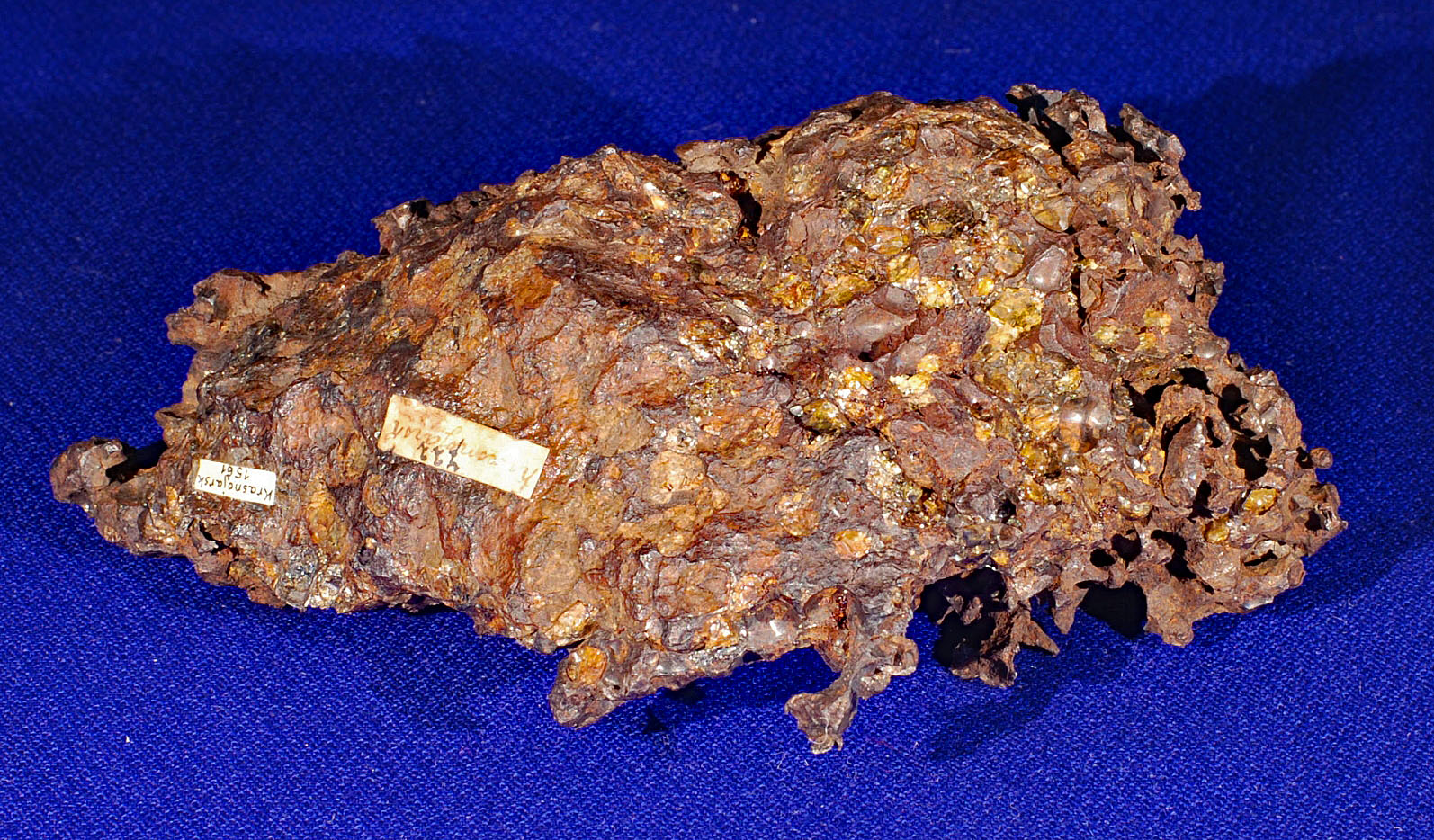|
Roll Overs:
#1
#2
#3
|

|
See below. Pallasite, PMG-an
TKW 700 kg. Fall not observed. Found 1749 in Krasnoyarskiy kray, Russia.
  
Holger writes:
The specimen on the blue background resides in Berlin. It is the 712 gram 'Klaproth' specimen (inventory number 1561), which, according to the inventory
sheet has a partially natural surface. The other specimen is in Saint Petersburg in the Geological Prospection
Museum. It weighs 206 grams and the reverse side of the specimen is partiall ypolished.
When first seen on a remote mountain ridge in central
Siberia, in 1749, this block of metallic iron/nickel,
mixed with olivine crystals, weighed almost 700 kg.
The discovery was published in 1776 by Peter Simon Pallas,
a German naturalist, who analyzed it, and concluded that
it was of natural origin, i.e. excluding ancient smelting
operations. By 1794, another German researcher, Ernst
Florens Chladni, published his revolutionary theory that
this block, along with many other enigmatic stone- or
iron-masses, originated from Cosmos, and had fallen to
the ground during a fireball phenomenon.
Over several operations the Pallas Iron was brought from
the finding place (91.5 d East, 55 d North) to a village
on the eastern bank of the river Jenisei, then to the city of
Krasnoyarsk, on to Saint Petersburg, and finally to Moscow,
where it rests in Fersman's Mineralogical Museum, sliced
into two halves. Presumed samples exist in many museums around
the world, but almost all lack any trace of the use of
heavy hammers and chisels, stated to be the tools used to
separate them. Could the have formed Imilac-wise?
The human figures are unrelated additions, probably made
by a copper-engraver in Saint Petersburg, while preparing
for publication of the third volume of Pallas' trilogy
"Travel through various provinces of the Russian Empire", 1776. |
Click to view larger photos
#1
#2
#3
|
Found at the arrow (green or red) on the map below
|
|
| |
Bernd Pauli
1/27/2018 2:30:01 PM |
... and about Imilac: PEDERSEN H. et al. (1989) Strewn-fields of Imilac and Vaca Muerta (Abs. and Prg. 52nd Annual Meeting of the Meteoritical Society, July 31- August 4, Vienna, Austria). |
Herbert
1/27/2018 12:00:40 PM |
Dear Mr. Pedersen, thank you for the pictures, and for your amazing work (and the books) about the Krasnojarsk and Vaca Muerta meteorites! |
Adri*n Contreras G*mez
1/27/2018 2:08:48 AM |
Amazing! Thanks |
| |
|